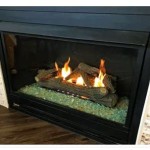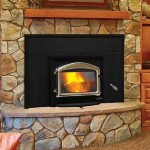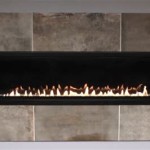Outdoor Fireplace Mantel: Design, Materials, and Functionality
An outdoor fireplace mantel is a significant architectural and design component, enhancing the aesthetic appeal and functionality of an outdoor living space. Selecting the right mantel requires careful consideration of material, style, and integration with the overall design to create a cohesive and visually pleasing focal point.
A well-designed mantel serves multiple purposes. It provides a decorative shelf to display personal items, such as plants, candles, or artwork, adding personality and warmth to the outdoor area. Functionally, it can serve as a protective element for the fireplace structure itself, shielding it from the elements and minimizing wear and tear over time. Furthermore, the mantel can act as a visual break between the firebox and the surrounding facade, offering a balanced and sophisticated appearance.
Selecting the Right Material
The choice of material is crucial for an outdoor fireplace mantel due to its exposure to weather conditions. Several popular options exist, each with its distinct advantages and disadvantages. These materials include natural stone, wood, concrete, and metal.
Natural stone, such as granite, limestone, or sandstone, provides a durable and aesthetically pleasing option. It withstands extreme temperatures and weather conditions, offering longevity and a timeless appeal. Stone mantels typically require minimal maintenance, though occasional cleaning is advised to remove dirt and debris. The natural variations in color and texture inherent in stone create a unique and organic look, blending seamlessly with outdoor environments. The cost of natural stone can be higher compared to other materials. Installation also requires professional expertise due to the weight and potential complexities of working with stone.
Wood mantels offer a warm and inviting aesthetic, complementing various architectural styles. However, wood is susceptible to rot, insect infestation, and weather damage. To mitigate these risks, it’s imperative to select weather-resistant wood species like cedar, teak, or redwood. Regular sealing and staining are necessary to maintain the wood's integrity and beauty. Pressure-treated lumber can be an alternative, although its appearance may not be as appealing as natural wood grains. Wood mantels allow for greater design flexibility, allowing for intricate carvings and customized shapes to achieve the desired aesthetic.
Concrete mantels provide a versatile and customizable option. Concrete can be molded into various shapes and textures, allowing for a seamless integration with modern or contemporary designs. Additionally, concrete can be stained or pigmented to achieve the desired color, matching the surrounding landscape or architectural elements. While durable, concrete is prone to cracking and staining over time. Proper sealing is crucial to prevent water damage and maintain its appearance. The weight of a concrete mantel requires careful consideration of the supporting structure and may necessitate professional installation.
Metal mantels, typically constructed from steel or wrought iron, offer a sleek and modern aesthetic. Metal is durable, fire resistant, and requires minimal maintenance. Powder coating can be applied to protect the metal from rust and corrosion, ensuring longevity in outdoor environments. Metal mantels can be fabricated into various shapes and designs, from simple and minimalist to ornate and decorative. The potential for heat transfer from the firebox to the mantel must be considered, particularly with metal mantels, as they can become hot to the touch during fireplace operation. Proper insulation or design modifications may be necessary to mitigate this risk.
Design Considerations
The design of the outdoor fireplace mantel should complement the overall style of the outdoor living space. The size and proportions of the mantel should be proportionate to the size of the fireplace and the surrounding area. A mantel that is too large or too small can disrupt the visual balance and detract from the overall aesthetic.
Consider the architectural style of the home and landscape when selecting the mantel design. A rustic stone mantel may suit a traditional or country-style setting, while a sleek concrete or metal mantel might be more appropriate for a modern or contemporary design. The style and color of the mantel should coordinate with other outdoor elements, such as patio furniture, landscaping, and architectural features.
The addition of decorative elements can further enhance the aesthetic appeal of the mantel. Consider integrating lighting, such as recessed spotlights or string lights, to highlight the mantel and create a warm and inviting ambiance. Adding decorative items, such as plants, candles, or artwork, can personalize the space and add a touch of character. Consider the weight and stability of any items placed on the mantel to ensure safety and prevent accidents.
Installation and Maintenance
Proper installation is critical for the safety and longevity of the outdoor fireplace mantel. Depending on the material and design, professional installation may be necessary. Ensure that the supporting structure is adequate to bear the weight of the mantel and any objects placed upon it. Follow manufacturer's instructions and local building codes to ensure a safe and compliant installation.
Regular maintenance is essential to preserve the appearance and integrity of the mantel. Cleaning the mantel regularly to remove dirt, debris, and soot is advisable. The frequency of cleaning will depend on the material and the environment. For wood mantels, inspect for signs of rot or insect infestation and treat as needed. Re-sealing or staining may be necessary periodically to protect the wood from the elements. For stone and concrete mantels, inspect for cracks and stains. Sealing can help prevent water damage and maintain the appearance. Metal mantels should be inspected for rust and corrosion and treated with a rust inhibitor or protective coating as needed.
Addressing any issues promptly will prevent further damage and extend the lifespan of the mantel. Following these guidelines will ensure that the outdoor fireplace mantel remains a beautiful and functional element of the outdoor living space for years to come.
:max_bytes(150000):strip_icc()/autumnal-flair-x-39317562aca84360b4b0601f3a14f266.jpg?strip=all)
23 Outdoor Fireplace Ideas For A Glowing Retreat
:max_bytes(150000):strip_icc()/bring-holidays-outside-x-50f80e4865984b36b603a1de82d2938b.jpg?strip=all)
23 Outdoor Fireplace Ideas For A Glowing Retreat

Outdoor Fireplace Design Build

Pin By Anna Coomber On Outdoor Mantels Stone Fireplaces Fireplace Patio
:max_bytes(150000):strip_icc()/screened-porch-living-room-x-5b0a850dfe1d4c9d8a304b302d1b638b.jpg?strip=all)
23 Outdoor Fireplace Ideas For A Glowing Retreat

53 Most Amazing Outdoor Fireplace Designs Ever Chimeneas Diseño De Chimenea Cocina Al Aire Libre

Warm Ideas For Your Autumn Fireplace Mantel Decoist

Italian Tuscan Stone Outdoor Fireplace Mantels From United States Stonecontact Com

Custom Made Outdoor Fireplace Mantle By Adney Sons Fine Woodworking Custommade Com

Outdoor Fireplace Mantel Ideas From Capo Building Specialties
Related Posts








